Yunmu Huang
AcroFOD: An Adaptive Method for Cross-domain Few-shot Object Detection
Sep 22, 2022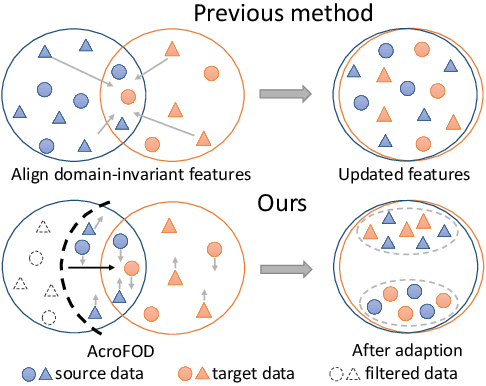
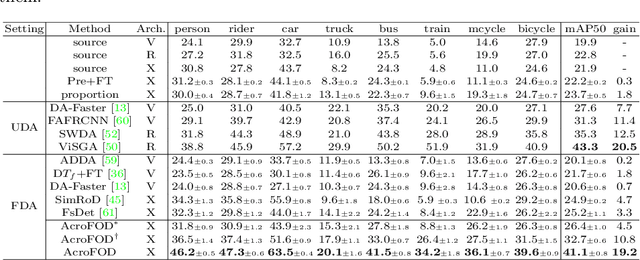
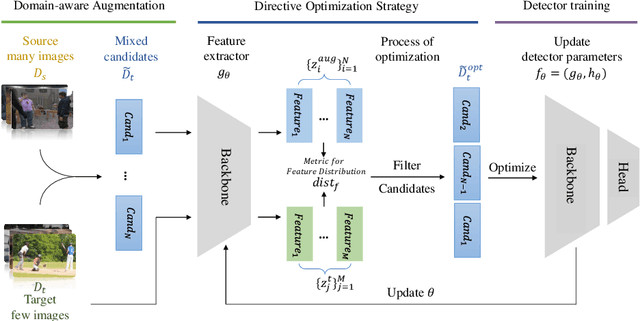
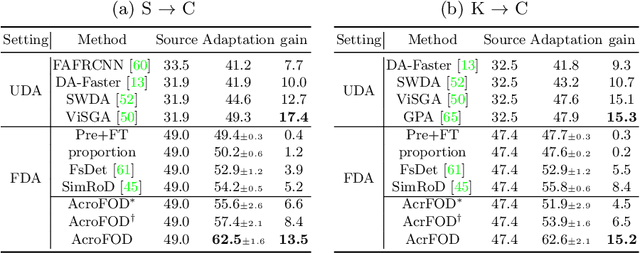
Abstract:Under the domain shift, cross-domain few-shot object detection aims to adapt object detectors in the target domain with a few annotated target data. There exists two significant challenges: (1) Highly insufficient target domain data; (2) Potential over-adaptation and misleading caused by inappropriately amplified target samples without any restriction. To address these challenges, we propose an adaptive method consisting of two parts. First, we propose an adaptive optimization strategy to select augmented data similar to target samples rather than blindly increasing the amount. Specifically, we filter the augmented candidates which significantly deviate from the target feature distribution in the very beginning. Second, to further relieve the data limitation, we propose the multi-level domain-aware data augmentation to increase the diversity and rationality of augmented data, which exploits the cross-image foreground-background mixture. Experiments show that the proposed method achieves state-of-the-art performance on multiple benchmarks.
Deep Surface Normal Estimation with Hierarchical RGB-D Fusion
Apr 06, 2019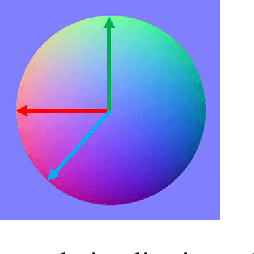
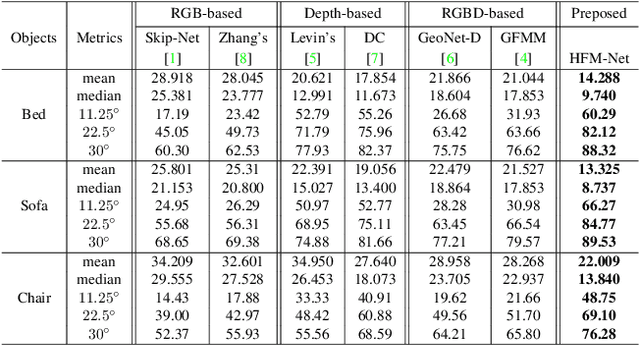
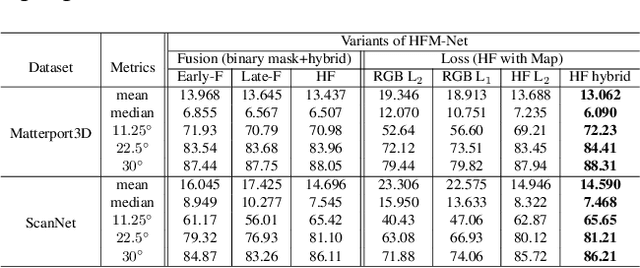
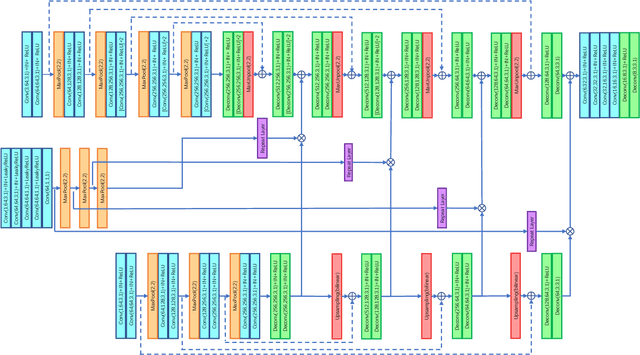
Abstract:The growing availability of commodity RGB-D cameras has boosted the applications in the field of scene understanding. However, as a fundamental scene understanding task, surface normal estimation from RGB-D data lacks thorough investigation. In this paper, a hierarchical fusion network with adaptive feature re-weighting is proposed for surface normal estimation from a single RGB-D image. Specifically, the features from color image and depth are successively integrated at multiple scales to ensure global surface smoothness while preserving visually salient details. Meanwhile, the depth features are re-weighted with a confidence map estimated from depth before merging into the color branch to avoid artifacts caused by input depth corruption. Additionally, a hybrid multi-scale loss function is designed to learn accurate normal estimation given noisy ground-truth dataset. Extensive experimental results validate the effectiveness of the fusion strategy and the loss design, outperforming state-of-the-art normal estimation schemes.
 Add to Chrome
Add to Chrome Add to Firefox
Add to Firefox Add to Edge
Add to Edge